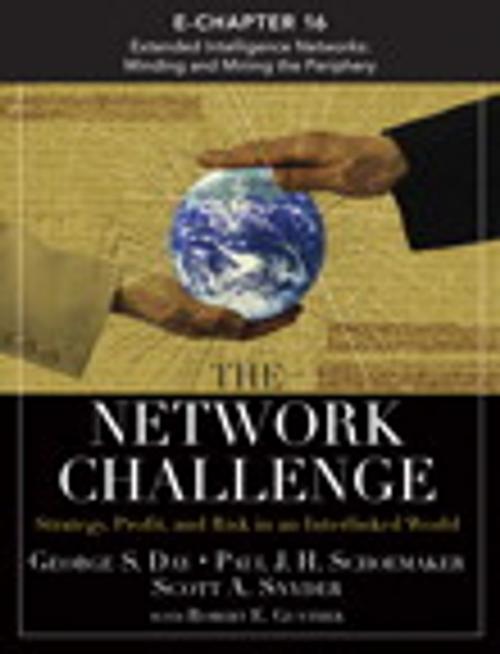The Network Challenge (Chapter 16)
Extended Intelligence Networks: Minding and Mining the Periphery
Business & Finance, Management & Leadership, Planning & Forecasting| Author: | George S. Day, Paul J. H. Schoemaker, Scott T. Snyder | ISBN: | 9780137015115 |
| Publisher: | Pearson Education | Publication: | May 19, 2009 |
| Imprint: | FT Press | Language: | English |
| Author: | George S. Day, Paul J. H. Schoemaker, Scott T. Snyder |
| ISBN: | 9780137015115 |
| Publisher: | Pearson Education |
| Publication: | May 19, 2009 |
| Imprint: | FT Press |
| Language: | English |
Although networks in key business areas such as communications, supply chains, R&D, and sales are designed to improve the flow of information, people, or goods, they can also be used to improve the “peripheral vision” of the organization. In this chapter, the authors examine how networks can be used by organizations to scan, sense, and adapt to new and important signals from the organization’s strategic environment beyond its core focus. The first part of the chapter emphasizes the importance of peripheral vision in helping organizations not being blindsided by threats while seeing new opportunities sooner. The authors examine some key obstacles to using networks to better mine the periphery for early insight. They then explore how extended networks can help the organization be a responsive open system adapting faster to changes in the environment. They examine to what extent network constructs such as centrality, hierarchy, self-healing, distributed intelligence, multihoming, and latency can be used to improve organizational networks for scanning the periphery. The last section explores some of the leadership challenges associated with using networks to detect weak signals sooner.
Although networks in key business areas such as communications, supply chains, R&D, and sales are designed to improve the flow of information, people, or goods, they can also be used to improve the “peripheral vision” of the organization. In this chapter, the authors examine how networks can be used by organizations to scan, sense, and adapt to new and important signals from the organization’s strategic environment beyond its core focus. The first part of the chapter emphasizes the importance of peripheral vision in helping organizations not being blindsided by threats while seeing new opportunities sooner. The authors examine some key obstacles to using networks to better mine the periphery for early insight. They then explore how extended networks can help the organization be a responsive open system adapting faster to changes in the environment. They examine to what extent network constructs such as centrality, hierarchy, self-healing, distributed intelligence, multihoming, and latency can be used to improve organizational networks for scanning the periphery. The last section explores some of the leadership challenges associated with using networks to detect weak signals sooner.















